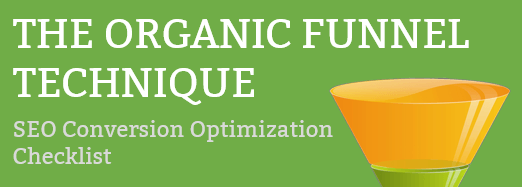Improving your conversion rates is more than just a simple a/b test.
Increasing Lead Generation with Conversion Optimization
Conversion rate optimization (CRO) is simply the process of changing and measuring different elements on your forms and website that increase the odds of someone filling out a form or buying something. There is a lot of statistical science behind determining what is better at driving conversions. The two most common techniques used are A/B and Multivariate testing.
We focus on CRO because its the fastest and most proven method for growing your online business. If you want to see how conversion optimization can impact your lead generation, use this calculator to find out how many new leads you could generate.
CRO Removes the Guesswork From Web Design
The good thing about conversion optimization (read the beginner’s guide to conversion optimization) is that it takes some of the guesswork out of web design. You can roll out different ideas and test them against one another in real time without the visitor knowing they experienced anything different. The change that causes the most conversions wins.
What optimization doesn’t do though is tell you up front what the best idea is going to be so that you can start out there. This takes an experienced design team that has a lot of testing experience to know the best places to start.
A/B testing and especially Multivariate testing requires a website that has enough traffic. It can take a long time to accurately measure any change if traffic is too low. This is why you can’t always rely on just these basic testing tools. Other tools that can be used include using standard web analytics, heatmaps, tracking mouse movements and polling site visitors.
Improving Your Conversion Rate
For anyone doing any kind of business online, whether it is non-profit, B2B or B2C, increasing the number of people that come to your website is critical. It may be you want people to click beyond the homepage, read your white paper or buy something, but every web developer should want people to move beyond the content and take some kind of action. How many people do take that next step, divided by the total number of visitors, is the conversion rate for that action.
When we start, we will first find out what the organization goals are, what is performing and what is not. These won’t be mere guesses but based on actual data and performance indicators used to help you meet company goals. Unless you are actually doing testing and optimization, you don’t know why people aren’t converting, so any designs done at this point are simply guesswork and not based on fact. Design needs to be motivated by the goals and actual evidence based on data collected from visitors and the site.
Understanding Traffic Sources
Once we have a solid understanding of the business and website goals, we will take a look at where people are coming from to the website and where they are landing. This will help everyone gain an understanding of their intent on visiting the site so that funnels can be created to help guide them to the desired actions.
Understanding Visitor Actions
To help visitors get the information they came looking for and therefore closer to the business goals, it is important to understand how people are using and interacting with the website. The goal is to understand why some visitors convert and others do not. This can be easily accomplished using heat mapping, click analytics, mouse movements, form analytics and actually asking the visitor if they found what they were after.
Creating and Running a Testing Strategy
With a solid understanding of the business, why people are coming to your site and where they are going, we can create a testing strategy around your site goals. This will focus on form design, the website calls to action, the layout of landing pages and the wording of your copy.
Once the tests have been approved and designed, the tests will be set up to starting running. The length of time that tests are run depends on how much traffic is coming to the site and what is being tested. After testing has begun, the tests will be monitored daily to gain any new possible insights. At the completion of tests the winner, chosen by actual visitor interactions will be used in the next test with a new version. This testing should continue in order to keep finding the optimum designs that convert your visitors into customers.
Where to Start
Every website can benefit from regular testing, including this one. We’d love to take a look at your website to see how we can help it drive more customers your way.
Articles on Conversion Rate Optimization Strategies






